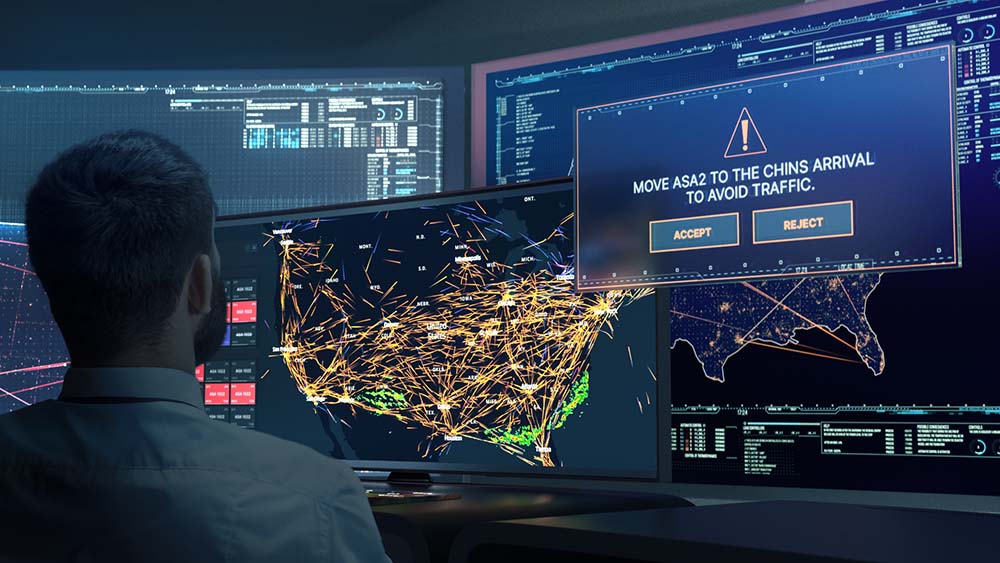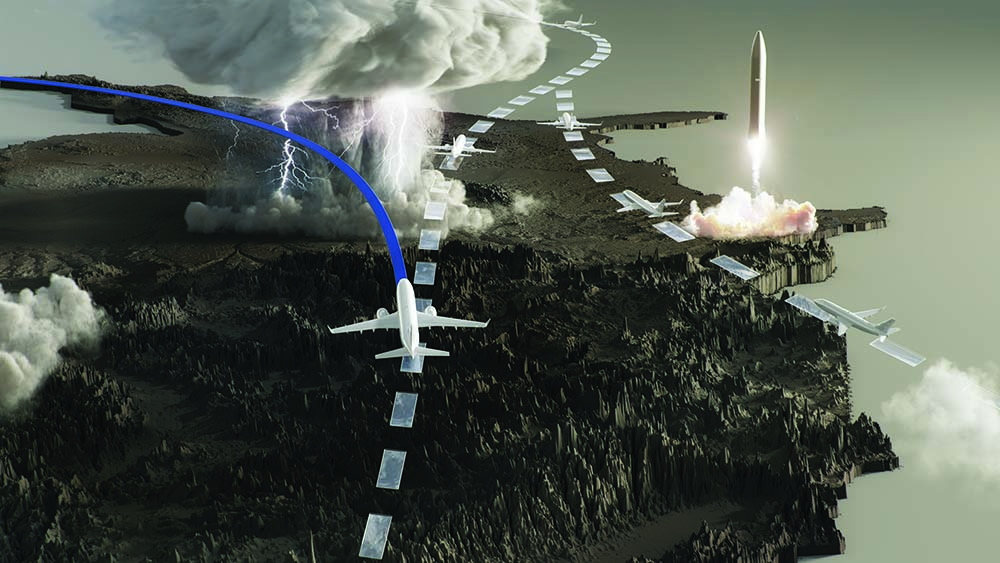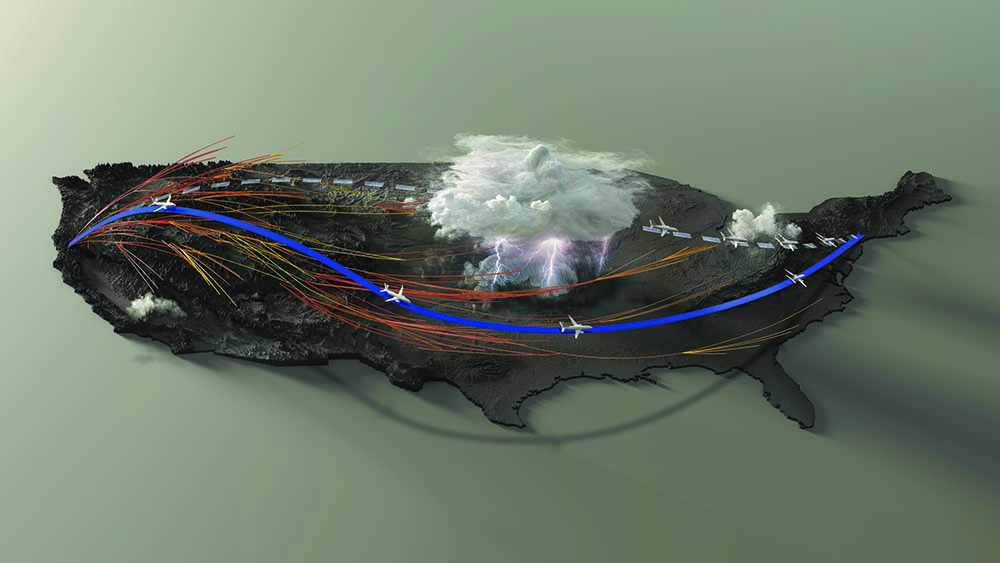Alaska dispatchers and Silicon Valley are revolutionizing more efficient, sustainable ways to fly
Share

What might be one of the most significant uses of technology to come into the aviation industry in 30 years, is happening right now … about eighty feet off the ground in Alaska Airlines’ Network Operations Center. It’s here, on the sixth floor of “The Hub” in Seattle, where Alaska dispatchers are working to determine the safest and most efficient ways to fly our aircraft from point A to point B.
“We’re responsible for selecting the route, determining the fuel and working around weather to get our flights and guests where they need to go safely, as smoothly and efficiently as possible,” said Brad Ward, a longtime Alaska dispatcher responsible for working with pilots to ensure the safe routing and operation of a flight.
Dispatchers have relied on legacy computer systems for years to build one flight at a time. Now, with new tools, we’re able to make informed decisions quickly with even greater precision,” said Ward.
Flyways AI is a new platform from a software-first aerospace company called Airspace Intelligence. The software uses artificial intelligence (AI) to help dispatchers plan the most efficient routes around the continental U.S., and continuously monitor flights. This is a first in the U.S. transportation industry, and likely the world. AI and machine learning (ML) helps dispatchers sort through multiple sources of information to calculate the best way to get you to your destination quickly and safely. Think Waze GPS navigational app, but for airplanes.
Airspace Intelligence and Alaska have been working together for two years to best implement Flyways across the continental U.S. so that it delivers the best results in Alaska’s operating environment for innovation, safety and sustainability.
Alaska’s pilots have a long history of operating the safest and most efficient routes in the industry, beginning with our pioneering work on Required Navigation Performance when our pilots became the world’s first to fly space-based approaches versus traditional terrestrial routes,” said Pasha Saleh, flight operations strategy and innovation director for Alaska Airlines. “Flyways is part of that continued journey. It allows us to look at everything, to optimize all available data and plan routes in real time to get our guests to their destinations smoother, safer and faster.”
Optimizing data, minimizing carbon, getting you there faster
With today’s rapidly evolving AI capabilities and our ever-present goal of reducing carbon emissions, the time is right to invest in tools that enable dispatchers to work with pilots to ensure each flight’s safe routing and operation and help us achieve our operational and sustainability goals.
When determining a flight path for an aircraft, several stakeholders are involved: the Federal Aviation Administration (FAA) and the dispatcher(s). Together, they provide routing options and recommendations based on a handful of data points and up to eight sources like weather reports and restricted air updates. Dispatchers collect the data from these FAA-approved sources before departure and build each flight’s time and flight paths.
Flyways simplifies the process, but it also enables a dispatcher to process a complex array of variables seamlessly – and predictive information about the future – that is otherwise a challenge to take in simultaneously.
Flyways understands how and when traffic jams occur and uses predictive modeling to recommend routes that optimize our overall network, not just one flight. The tool helps our dispatchers select routes that avoid bad weather, turbulence, restricted airspace and airspace congestion enabling them to do what they do best. It also consolidates multiple tools into a single dispatch system, eliminating different sources for information. And the dispatcher uses their judgment to determine when and how to use the Flyways optimized routes while always ensuring that safety comes first.
Our mission is to improve the predictability of the highly complex and dynamically changing flight operations in the National Airspace System,” said Phillip Buckendorf, CEO of Airspace Intelligence. “We do this by applying the latest advances in AI to empower the quality, speed, and precision of human decision-makers.”
How will you notice a difference when flying Alaska?
As we all get back to more flying, Flyways will help our dispatchers deliver the safest and most efficient routes to our pilots, saving time and carbon emissions and getting our guests where they want to go faster and with less turbulence.
Imagine you’re on a flight from Seattle to New York City. Before the flight leaves, Flyways recommends a route to the dispatcher that skirts a storm currently sitting over Minnesota, saving minutes on your arrival time. And, as your flight prepares to descend, it does so on an arrival stream that Flyways has previously forecast will be least congested.
While minutes may seem insignificant when calculated into a full day of travel, every minute counts for guests connecting to flights. Plus, the amount of jet fuel consumed every minute is staggering.
In a six-month pilot with Flyways, Alaska reduced its fuel use by 480,000 gallons – reducing nearly 4,600 tons of CO2 emissions into the atmosphere. This was conducted during a time when flying overall was significantly depressed by the impacts of the COVID-19 pandemic. A perfect fit for our commitment to net zero carbon emissions by 2040 given the foundational step in that pathway to net-zero is operational efficiency. A smoother flight for our guests = a more sustainable flight for our planet. This is technology we can all get behind.
Pack your mask and fly with us at alaskaair.com.





